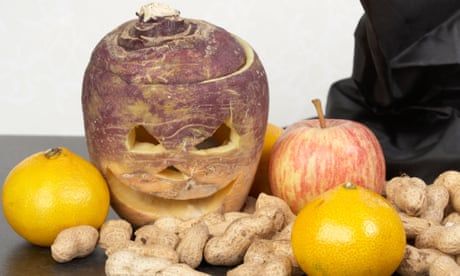
Readers respond to a piece by Zoe Williams and reflect on the long and rich history of the festival in Scotland and Ireland
Zoe Williams claims that “Britain came to Halloween relatively late and we have the zealotry of converts” (Why is Halloween suddenly so big in Britain?, 14 October). Britain did not come to Halloween late. Scotland has a long and rich history of Halloween traditions that continues to this day. Guising, like trick or treating, its American development, involves dressing up and going house to house. Unlike trick or treaters, guisers are expected to perform a party piece, before receiving sweets, nuts or a few coins. In the past, guisers often carried turnip lanterns. These were made by cutting the top off a turnip (the kind with yellow flesh), howking out its insides, and carving a face to be illuminated by a candle placed inside. The process of making a lantern was hard and took a long time. With the availability of carving pumpkins, the practice has declined in recent years.
Halloween games include dookin’ for apples, in which apples are placed in a bowl of water on the floor. Players kneel next to the bowl and try to secure an apple in their mouths. Another game involves suspending treacle scones from the ceiling on strings, while players attempt to get a bite of the scone with their hands behind their backs.
Lindsay Oliver
Sheffield